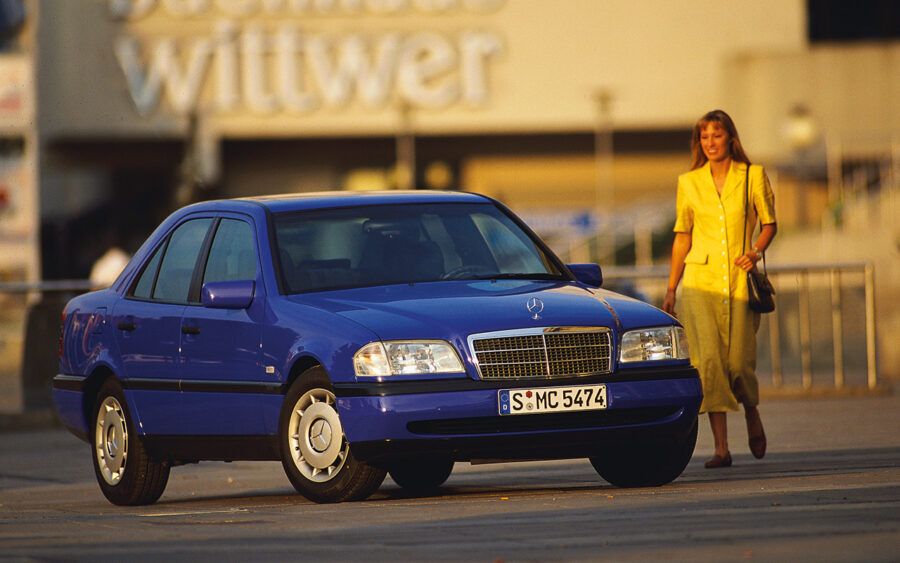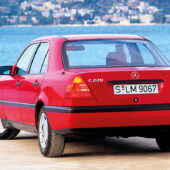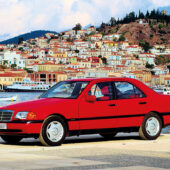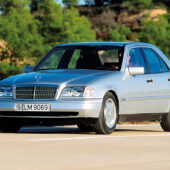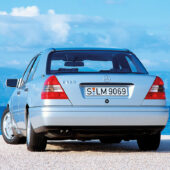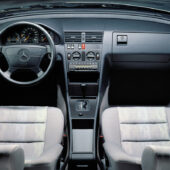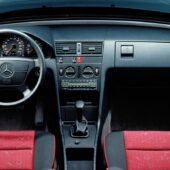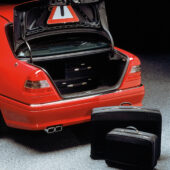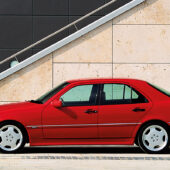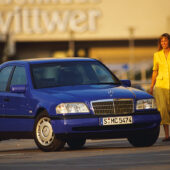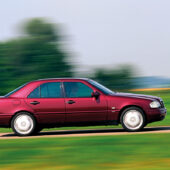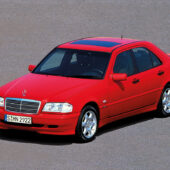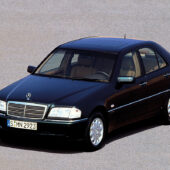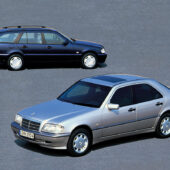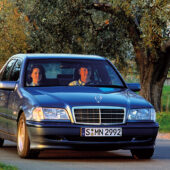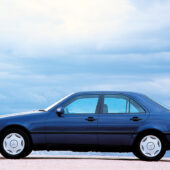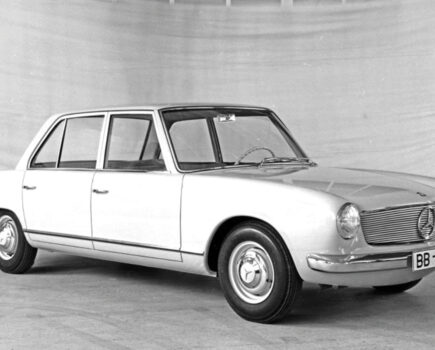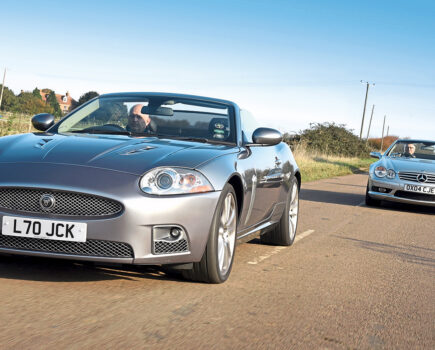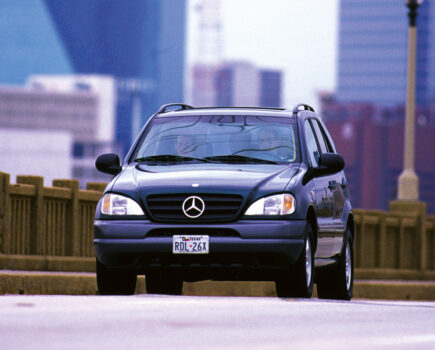The W202 C-Class was Mercedes’ difficult second album after the hugely successful 190E. Here’s the full story
Words: Sam Skelton Images: Mercedes-Benz
The Mercedes C-Class is one of Mercedes’ most enduring and popular model lines. Originally launched as the W202 to replace the ageing 190E, it is now in its fourth generation. As the original version turns 25, it’s an apt moment for Mercedes Driver to chart its history and development from cradle to grave.
Launched in 1993, the C-Class line began as a replacement for the decade-old 190E series. It was the last Mercedes saloon line to receive the new naming formula following the S-Class and E-Class nomenclature of 1992, with a letter denoting each series and a number directly relevant to its engine size.
Development had begun almost before the 190E was launched, and this new model benefited from almost decade of research and development to ensure it was at the top of its game. Development had begun in October 1986 upon what at the time was called the new 190.
Design work commenced under Bruno Sacco’s guidance in 1987, with two front-running designs emerging in 1988. By the beginning of 1990, Olivier Boulay’s design had been chosen, frozen, and development begun. Boulay had previously penned the body of the W140 S-Class, and following a stint away from Mercedes returned in 1992 to create the Maybach concept of 1997.
When launched, the range was the sole Mercedes range to consist of nothing but multivalve engines. The C-Class was offered in C180, C200, C220 and C280 petrol-engine form, plus the C200D, C220D and C250D diesel models.

Later engine options from 1996 included a 2.3-litre four cylinder derived from the 2.2-litre. This engine was subsequently supercharged, fitted to the C230K as well as the SLK sports car. Certain markets also received a 2.0 supercharged C200K to take advantage of tax laws. Five speed manual gearboxes were standard at launch, with an optional four speed automatic, and a five speed automatic from 1996.
The C230 and C280 were replaced with V6 engines in 1997, the C240 and C280 V6. CDI common-rail diesels were introduced in 1997 too; the C220CDI being followed shortly by a C200CDi derivative. Some later models received a 5 speed automatic.
The C-Class emerged into what was a fiercely contested small executive car sector. Chief among its rivals was the E36 BMW 3-series, though the later Audi A4, the Volvo 850 and the Saab 900 were all strong rivals too. Even prestigious versions of many family and fleet cars were often considered alongside more basic examples of the C-class, giving it a wide scope in the market.
There were four levels of trim; Classic, Esprit , Sport, and Elegance. Classic was the entry level model, with the most basic specification – intended to attract new customers who might not be able to afford a more expensive Mercedes model.
The Esprit was targeted at a similar, though more youthful, market – with lower springs, and carbon fibre effect trim in place of any black plastic or wood. Sport added to Esprit with lowered sports suspension, white dials, a smaller steering wheel and bucket seats, and was intended as the most youthful specification option. Many Sport models were supplied with an optional twin rear bucket seat option, though this wasn’t standard.

The Elegance model was the best-equipped as standard, with upgraded cloth trim, a walnut dashboard, colour keyed bumper finishers with chrome trim, black-chrome window surrounds, and electric windows all round. Again, many Elegances were fitted with a high number of extras including air conditioning, alloy wheels and leather seats – if you want a miniature S-Class, this is the likeliest candidate.
An estate model was launched in 1996, with specifications following the saloon models across the range with the exception of the later AMG models. Where the saloon was given development code W202, the estate became S202 in line with Mercedes naming convention. The following year the C-Class range was facelifted, with new lights, new alloys and subtly different interior changes. It survived in this form until production ceased.
The C-Class was the basis of one of the first of the new breed of in-house AMG models. The 1995 C36 AMG was intended to rival the six-cylinder BMW M3, and built upon the C280’s start with 1” lower sports suspension, a bodykit, and a hand-built 3.6-litre six cylinder engine which was capable of anywhere between 276 and 287bhp – hand assembled engines not being noted for consistency.
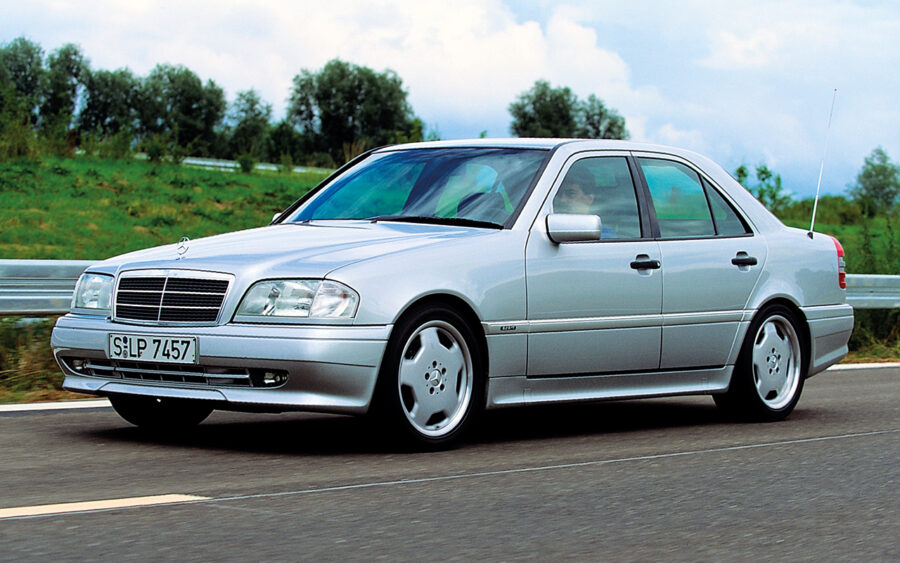
The C36 was followed in 1997 by an even more powerful model. Public reaction to the V8-engined E430 had been encouraging, so Mercedes tasked AMG with the job of fitting the 4.3-litre M117 engine into the C-class. The resultant C43 AMG was even more powerful, developing 302bhp and 302lb ft of torque. The gearbox was an uprated derivative of the 722.6 found in the SL500, and the braking system had been taken from the larger E55 AMG.
While strictly speaking there was no C-Class coupe derived from this chassis, the W202 also begat the CLK. Designed as a replacement for the C124 E-Class coupe, the CLK retained styling derived from the E-Class range but was based on the floorpan and drivetrains of the smaller car. A 1.8 was not available, nor were diesels – but as with the saloon line the engines spanned from 4-cylinder through to a V8 AMG variant.
The W202-series C-Class was replaced in 2001 by the W203-series – a newer, softer design following the language of the new W220 S Class. Many enthusiasts don’t feel that subsequent models had the same level of build quality or the same traditional feel of the W202, and many believe that the W202 is the last of the “old school” Mercedes. 1.62 million saloons had been made, with 221000 estates.

